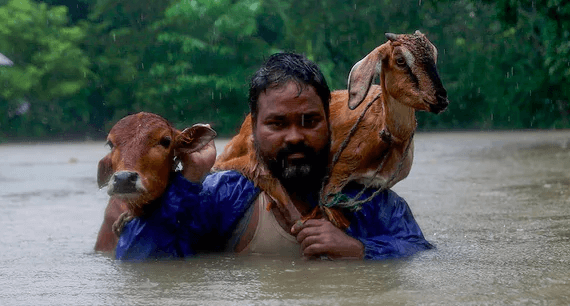

My family is West Bengali, a term that only came into existence following Partition and the formation of “West Bengal,” in India, and “East Bengal” originally part of Pakistan, but now present-day Bangladesh. Prior to that, East and West Bengal were simply Bengal. My father’s side of the family has ancestral roots from the land that is present day Bangladesh. My family, primarily based in Calcutta, India, continues to share a language, food, and many customs with the people of Bangladesh. The primary difference is the recognized national religion: Hindu versus Muslim.
This isn’t a post about arbitrary political borders and deep religious divides (I want to sleep tonight), it’s about a geographic area that is very close to my heart and makes up the DNA that manifests as my caramel mocha skin (thanking Starbucks for giving me an alternative to “brown”) and goldfish-like eyes that through most of my childhood were just too big for my face.
This geographic area has recently been devastated by intense rainfall and subsequent flooding, resulting in at least 1200 dead and hundreds of thousands displaced. Bangladesh, along with Nepal and northern India are in the midst of a major crisis. The immediate reaction by devastated governments and aid agencies experiencing natural disasters is to provide relief, but future planning for population adaptation to these types of events must reach the national consciousness now. This is the new normal.
The flooding is bad, and will only be intensified as sea level continues to rise. Sea level rise is unstoppable. The present day elevated global temperatures have already kicked off the irreversible melting of glaciers and the great ice sheets. There is no viable science or technology solution today to address this stark reality. We can, and we must still work to mitigate against global temperatures increases to prevent against the worst-case scenarios, but even if we were to collectively switch to a sustainable, non-carbon based energy today, or yesterday, it’s still too late.
Impacts of sea level rise are felt in various ways. In the case of Asia, the intense flooding and saltwater contamination is resulting in devastation to human lives and their livelihoods. Communicable diseases are an increasing risk due to the prevalence of conditions that mosquitoes thrive in, and the economic ramifications are also dire. This cannot be another disaster that the relevant governments simply put band-aids on, but rather serious policy upheavals are required. Building another embankment that washes away is futile as the new normal of where our planet is habitable versus inhabitable sets in. Bangladesh and other vulnerable areas that will NOT be habitable must adapt to the impacts of sea level rise. Bengal was divided on man-made conflicts, and might it reunite on man-made climate impacts? We are all caramel mocha after all.